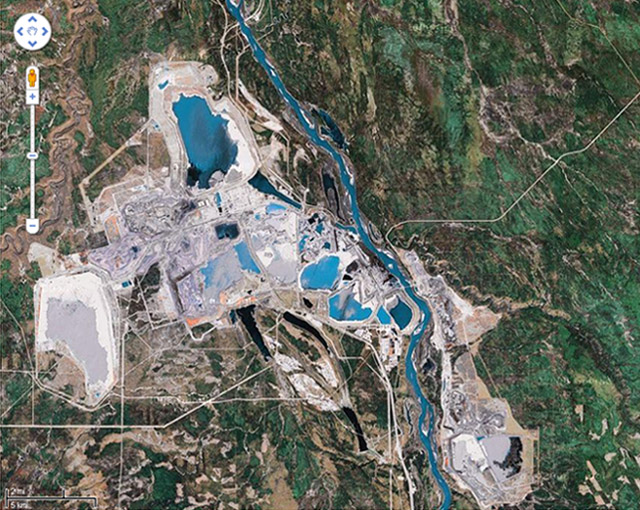ANOTHER PHILOSOPHICAL QUESTION: 16th JULY 2010
BACK
TO WEATHER-BLOG MENU
New!
Fine Art Prints & digital images for sale-
Welsh Weather
& Dyfi Valley landscapes Slide-Library - Click HERE
Energy plays a large part
in all our lives
here in the UK, yet how many of us do anything other than take its
source for
granted - unless it spoils the view?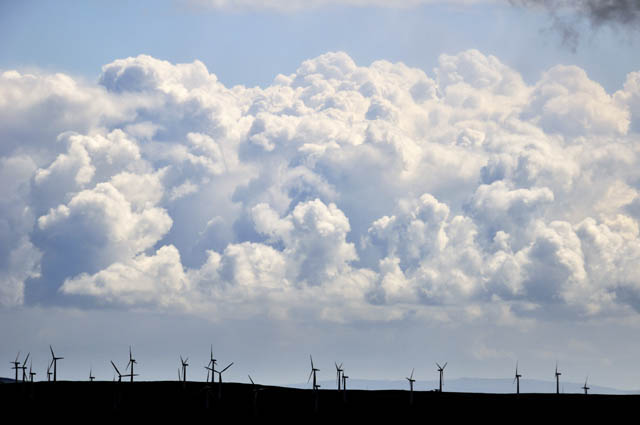 above: Trannon windfarm above Carno, Mid Wales Retired senior oil geologist Colin Campbell, a respected figure in the current energy debate, has put it thus: "The Oil Age opened 150 years ago, releasing a flood of cheap energy, such that today’s production is equivalent in energy terms to 22 billion slaves working around the clock." That might sound to some like a preposterous statement, but let's do some maths: Energy is measured in joules, and energy output in joules per second. One joule per second is one watt, so a sixty watt lightbulb outputs 60 joules/second. OK so far? Typical energy outputs of some familiar things are as follows: A hummingbird in hover: ~1 joule/second A human doing manual labour: ~100 joules/second A horse at work: ~745 joules/second. This is equivalent to one horsepower, so a 50 horsepower outboard engine at peak performance is outputting 745 x 50 = 37,250 joules/second - or the work of 372.5 men.  Above: a lot of work going to waste here in other words! Now let's look at a barrel of regular oil. 1 barrel contains 34.97 UK gallons, with an available energy output of a whopping 6,100,000,000 - that's six billion one hundred million joules of energy. An 8-hour man-day for a non-slacker consists of 60 x 60 x 8 = 28,800 seconds @ 100 joules/second The total output is therefore = 28,000 seconds x 100 joules/second = 2,880,000 Joules Let's now compare that to our barrel of oil: 6,100,000,000 joules (barrel of oil) divided by 2,880,000 (8-hour man-day) = 2118. Yes - a 34.97 gallon barrel of crude oil contains the energy output of 2118 man-days. That's one man working every day of the year for 5.8 years.  Current global oil demand (purple in the above graph, with orange being supply) is about 86 million barrels per day. 86 million x 2118 man-days gives us the rather ungainly figure of 182,148,000,000 man-days of oil-based energy consumed by Mankind each and every day. This daily figure is the equivalent of some poor bastard having to work for 499,035,616 years without a day off. That's from the Cambrian Period to now. Makes you feel tired just thinking about it! This phenomenally-useful energy source, however, is running up against constraints as demand grows in the new economies of India and China, the big oilfields become depleted and the rate of new discoveries continues to decline. A big, newly-discovered oilfield these days might be announced to contain an estimated ten billion barrels of oil. It sounds a lot until we factor in global daily demand: 10,000,000,000 divided by 86,000,000 = 116.27 days The relative lack of easy targets, compared to 50 years ago, has led to oil exploration taking place in more and more challenging places with greater and more complex attendant risks, such as witnessed in the Mexican Gulf this year. It has led to the development of alternatives such as biofuels, oil-shales and tar-sands, all of which require a lot more energy input to obtain the equivalent of a barrel of oil, making it a lot more expensive to produce. Thus, the age of abundant cheap oil is to all intents and purposes over, and the age of scarce oil is looming, bringing a headache for public and policymakers alike worldwide. This makes the resistance to the development of alternatives all the more mind-boggling. Let's get one thing straight - in the absence of technologies that are in the theoretical/experimental stage becoming mainstream - such as controlled nuclear fusion - we will not be able to replace the phenomenal abundance of oil-based energy straight away. As oil phases itself out, we can phase in other sources and economise on the way we use energy by radically changing our behaviour. However, whilst the NIMBY syndrome is so prevalent even this will be difficult. 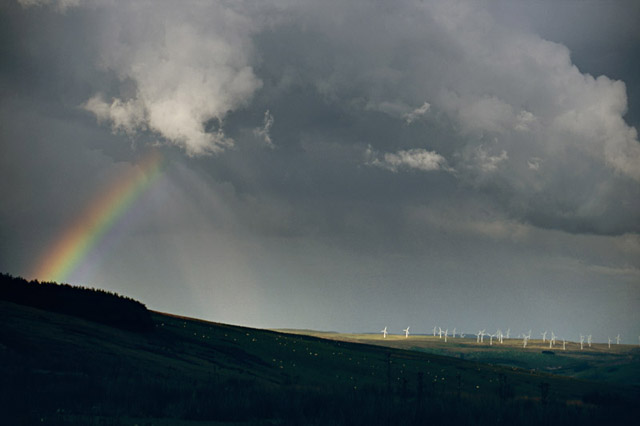 above: another view of Trannon windfarm above Carno, Mid Wales NIMBYism is a symptom of our modern age, where we take so much for granted and little care about its source, so long as we cannot see it from the living-room window. I'm as guilty of it as anybody - while, for example, I sometimes use wind turbines as a useful foreground to my storm images, I have a gut-feeling type of opposition to my favourite wild landscapes around Nant-y-moch being dotted with them, as has been proposed. Deep down I know that this is complete hypocrisy. Some other landscape, that I don't care about, so it can be developed as a windfarm, might be somebody else's dreamland. I know this and struggle to get to grips with it. But there is a lot of hypocritical talk bandied about when it comes to wind turbines. Let us compare them to automobiles for a moment. Automobiles come out way, way, on top when it comes to bird kills and noise - both strenuously put forward as objections to windfarms. We are talking orders of magnitude here. I have stood under, and downwind of large windfarms. Yes they make noise, but I have also stood in my parents' garden at midnight - they are half a mile from the M42 and 2 miles from Birmingham International Airport. Even at that time of night, there is a constant roar of other peoples' convenience going on. It is at least ten times louder than any wind turbines I have heard. But does anybody object? No - the automobile is king. And the view being spoiled by manmade developments? The Cambrian Mountains is home to a much more extensive form of these - conifer plantations - sometimes planted to heights where they grow into yellowed, stunted forms. When these uplands were planted, who complained about that? 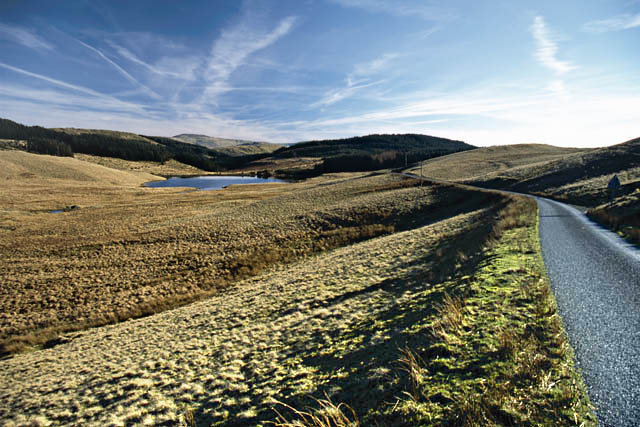 above: Llyn Nantycagl, contrails and conifers - within the area proposed for windfarm development
Here
is a Google satellite image of the Dyfi area of Mid-Wales, zoomed so
that the scale-bar is 5km. The Nant-y-moch area is towards the bottom,
just R of centre. 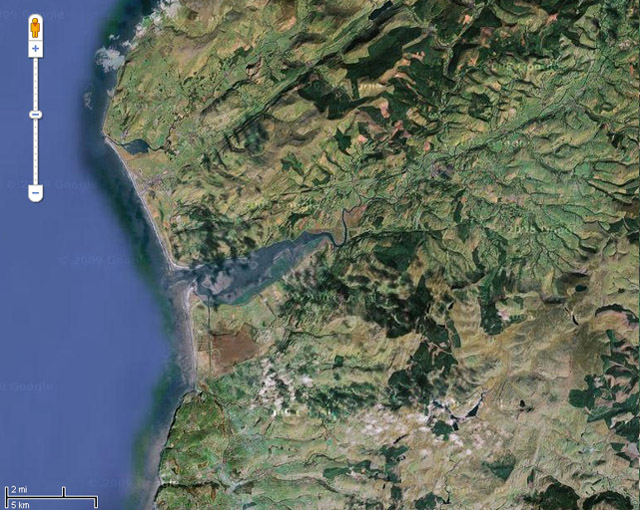
And
here is an image - at the same scale
- of one of the Tar-sands workings alongside the Athabasca River in
Alberta, Canada. Note that the screen display for Google satellite
images is slightly different for Canada and the UK, so I took
screengrabs of both and reduced the size of the Canadian one until the
scale-bars (bottom L) were identical in length. Try it yourself! Stretching
across
an area equivalent to the distance from Aberystwyth to
Llangurig, from Tonfanau to Cemmaes, this is in
somebody else's backyard.
|
BACK TO WEATHER-BLOG MENU New! Fine Art Prints & digital images for sale- Welsh Weather & Dyfi Valley landscapes Slide-Library - Click HERE |
